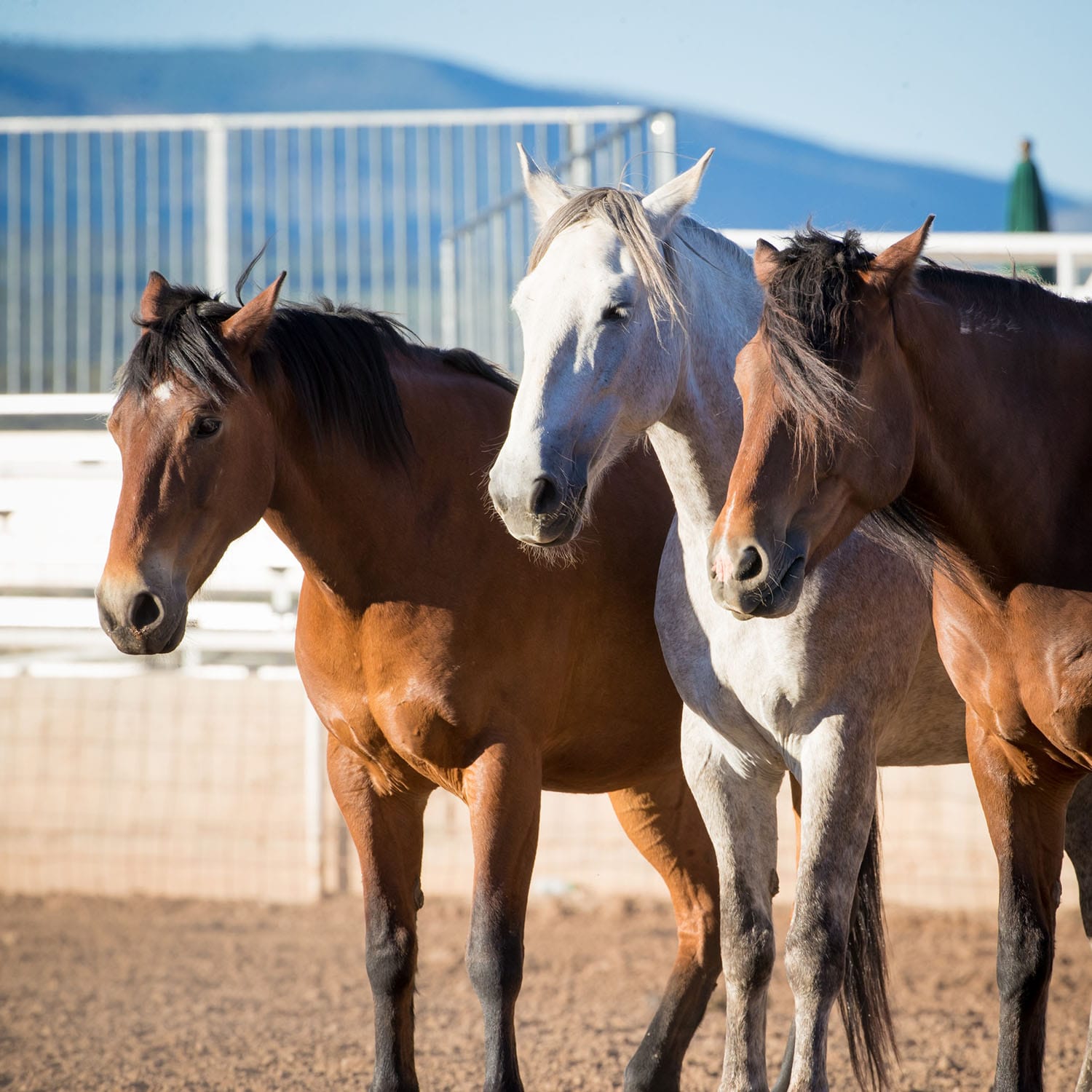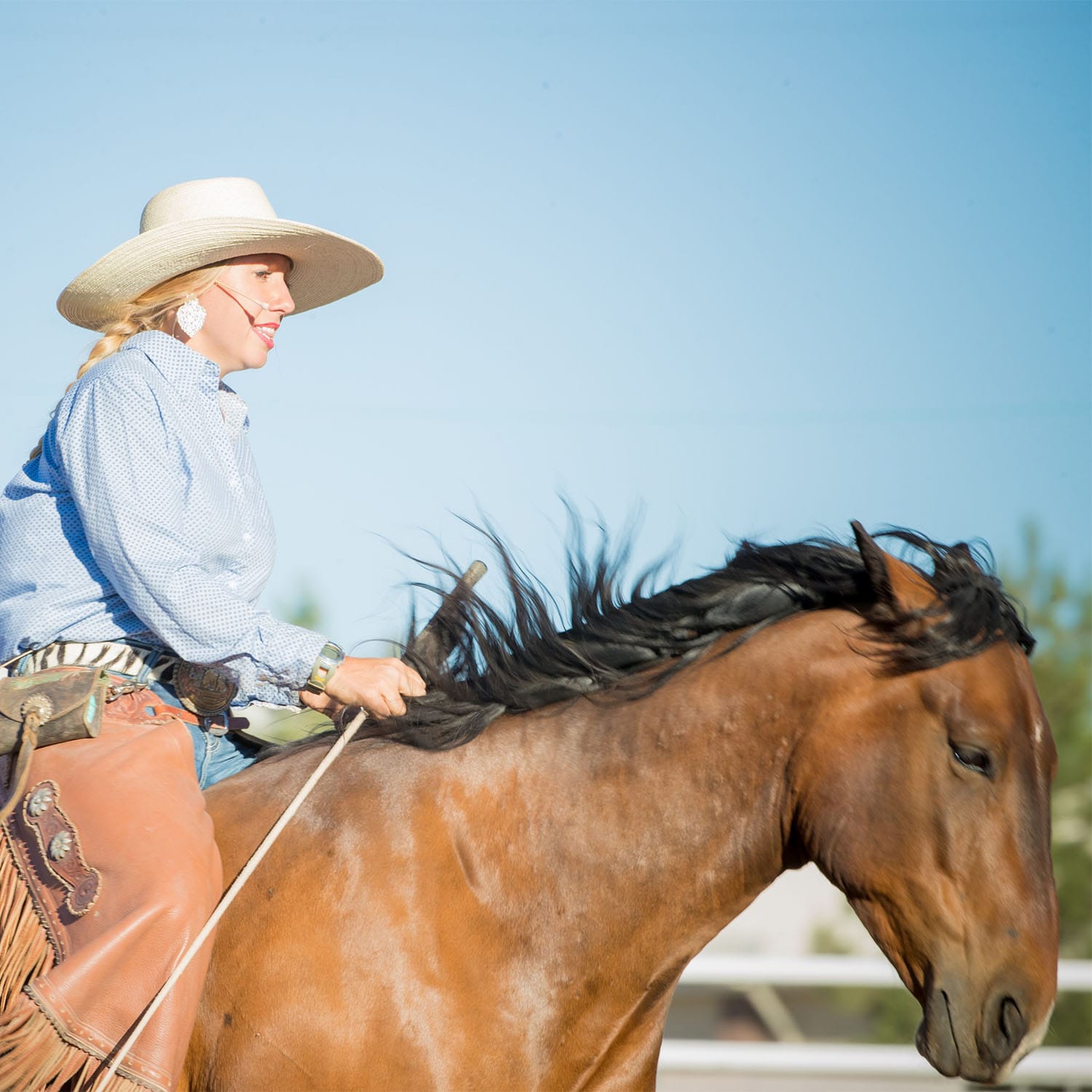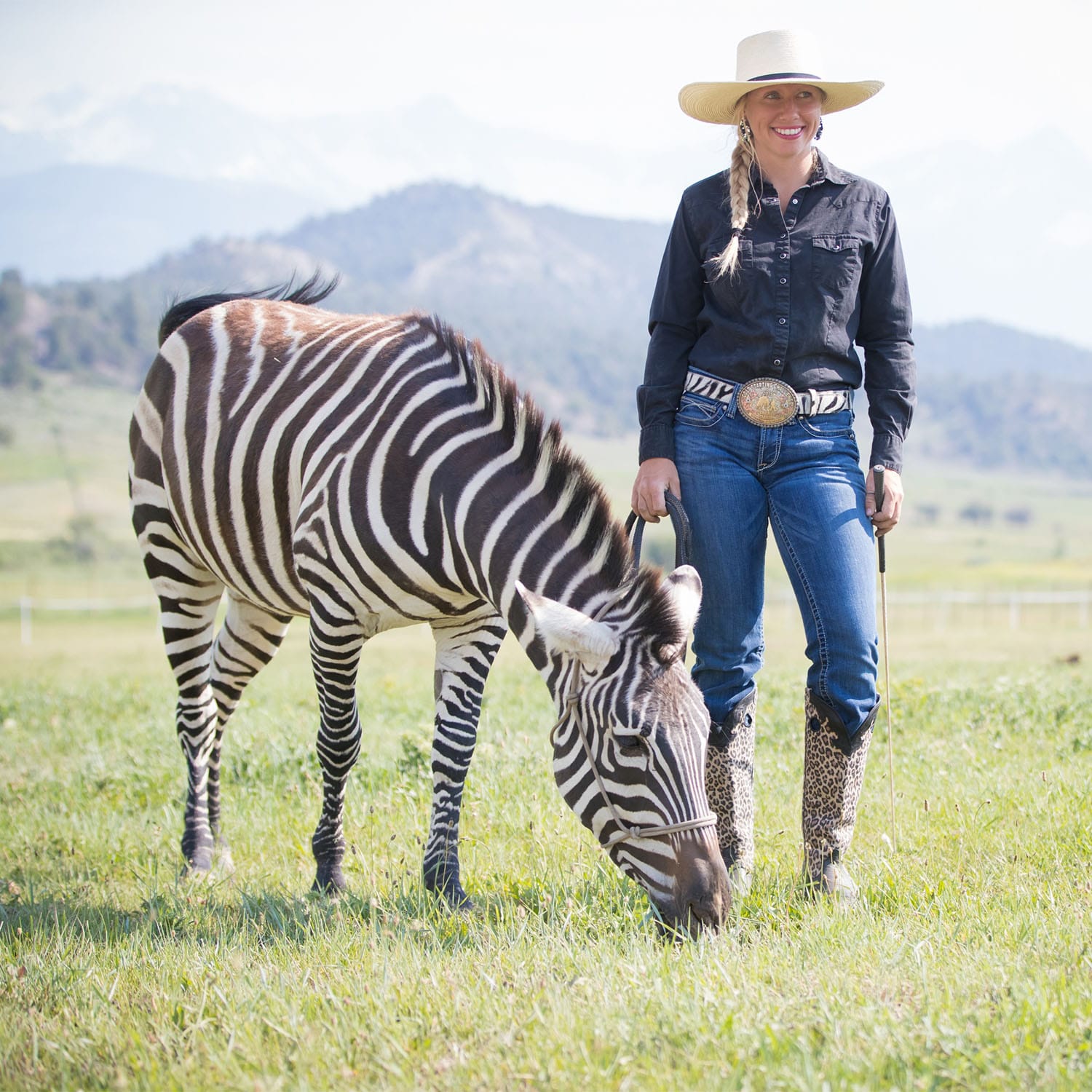
Question:
“What are two or three of the most common mistakes you see horse owners make with their horses when the horse owner is responding to what they consider a “bad behavior”?.”
Answer:
“Three of the most common “mistakes” I see horse owners making with their horses in response to unwanted behavior is (1) micromanagement, (2) struggling to apply pressure (too much, not enough, or too sudden), and (3) failing to break a behavior down into small enough components.” – Maddy
01. Micromanagement
Horses are powerful animals, and they can be pretty intimidating when they have a lot of energy! Oftentimes, we think we need to control that energy in order to stay safe. So, we continuously hold our horses back, and “ride the brakes” with constant contact. What many people fail to understand, though, is that this actually puts you at greater risk.
“Holding back and containing the energy doesn’t mean that energy goes away. It’s still there. In fact, the more you hold it back, the more it grows! Trying to contain your horse’s energy versus giving her a way to redirect it is like building a dam in a roaring river.”
If the water has no way of being redirected, the pressure continues to build until the dam is displaced and water bursts through in a surge of roaring water, destroying everything in its wake. Thus, redirecting your horse’s energy versus trying to contain it is the safest way to work through this power.
Not everyone feels comfortable working through a surge of energy while riding. That’s ok! Work through it in a way that feels safe for you, even if that means stepping off and going back to the ground.
This is a powerful lesson that may shed light on your coping mechanism of controlling situations, relationships, or some element of the environment when you encounter discomfort. When we act from a place of fear, we seek to control it. When we come from a place of love and compassion, we seek to create. Instead of stuffing your horse’s energy down and controlling it, seek to create something with it!

02. Struggling with Applying Pressure
Learning the art of applying pressure with horses is a delicate skill. Feel takes time to develop. I love this quote when thinking about our use of pressure with horses: “The mix of power and skill an elephant is able to exhibit with its trunk is incredible- the trunk is powerful enough to tear large branches from trees while being skilled and subtle enough to crack open a peanut without damaging the nut inside.” – Nat Geo Photographer & Blogger
Perhaps there is nothing that has been so largely abused over the years than this; and yet, the use of pressure is not “bad” in itself, just as an elephant’s trunk is not innately dangerous. What makes the trunk destructive or nourishing is the way in which the elephant uses it. Our horses won’t be offended by the use of pressure, fearful of it, or hold a grudge toward us when we learn to use it skillfully. Oftentimes pressure can be a tool that greatly clarifies our communication and closes the gap between horses and humans.
But the trick is learning to use our pressure—a tool that can be so immensely powerful that it can rip a branch off of a mighty tree—in a way so subtle, with so much precision, that like an elephant’s trunk when used with subtlety and skill, it can delicately open a peanut without damaging the nut inside. Like the elephant’s use of the trunk, we can learn to use pressure in such a delicate and nourishing way, that we can open our horses to a whole new world of possibilities, without damaging the heart inside of them.
So what does it look like when we use pressure skillfully?
We make a subtle request, which I call the whisper (lightest touch possible or just changing our energy and intent), followed by a warning (I use a vocal signal for this–a kiss or cluck depending on the type of request), which I then back with adding pressure until the horse responds (this process may vary when mixing negative and positive reinforcement, meaning the use of pressure plus food rewards, but perhaps a whole other conversation). In this way, the horse learns to respond before the onset of pressure. The end result is that the horse can display behaviors with the lightest touch or smallest shift in the human as possible, giving name to the term “horse whisperer.” This is also very similar to how horses communicate with other horses.
Horses are able to eventually communicate amongst themselves with virtually no physical contact. In a case that observed feral horse herds in the US, it was found that a stallion could get a mare to move 98% of the time by merely lowering his head.
What does it look like when we fail to use pressure skillfully?
Unclear is unkind. Many times I see people putting pressure on a horse sporadically in an attempt to be kinder to the horse. For example, they will begin putting pressure on a horse, but then the horse offers some sort of undesirable response to the pressure and the human perhaps feels bad or wrong for applying it, then releases. But the release is a reward to the horse and he is given information that whatever he was doing at the time of the release was what was desired. For example, if the owner applies the reins to back the horse up and the horse brings his head up and resists the pressure, the rider releases, she communicates the horse needs to raise his head in order to find relief from the pressure. Thus, the message of what she wants the horse to do is unclear and it is very confusing for the horse.
The intention was to be kinder to the horse, but what ends up is that the horse will actually have to experience more pressure than normal to finally have a breakthrough because of the inaccurate reinforcement history. For people who struggle with the use of pressure and release (negative reinforcement), positive reinforcement can offer a solution because pressure doesn’t necessarily have to stay on until the horse changes his behavior in a desirable way; he will simply miss out on a click and treat. However, how many behaviors can be trained with positive reinforcement depend on the horse, human, and several other factors.

When More Pressure Is Not The Answer
On the other side of the spectrum, I also see people putting too much pressure on or using pressure without warning. When you skip the sequence mentioned above (on how to use pressure skillfully), the horse will develop chronic coping strategies such as fight (resisting pressure or pulling through it), flight (perpetual state of anxiety and frenzy) or freeze (become dull and shut down). The horse can never be relaxed because he never knows when pressure may come out of the blue–the result is a horse walking on eggshells his entire life.

03. Blowing Past Threshold
Another common issue I see is people asking for too much from a horse, whether it’s asking for too many steps of a piaffe or approaching a wild horse too closely. Thus, the ability to read the horse and his “threshold” is crucial. I define a threshold as the horse’s physical, mental, or emotional boundary. When you cross the threshold, the horse will go into a reaction; He will kick out, bite, strike, bolt, or buck. Most people describe a horse’s reaction of “coming out of nowhere” when in reality the horse was giving the person a host of subtle signs that were ignored. Thus, the horse must become louder in his communication to be heard, as displayed with a full-blown reaction.
“In order to avoid going past the threshold, the solution is to break the behavior down into smaller components. Behaviorists call this shaping.”
The Process of Shaping
Shaping is a process that involves rewarding small, successive approximations of a final, complex target behavior in order for the animal to learn the complex target behavior without frustration or fear. In horse world terms, I’ve heard this stated a multitude of ways: Reward the smallest try (Ray Hunt). Break it down into small enough bites so the horse doesn’t “choke” on it (Richard Winters). Reward the top of the thought, not the bottom of the thought (Chris Cox). Learning how to break a behavior down can be tricky and may require creativity, as most of what we see among professional trainers is the end result and the steps taken to get there can remain hidden.

